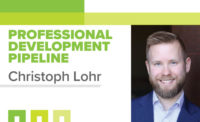From my last couple columns, we had an in-depth conversation with one of the people analytics industry’s leading experts Kelly Reed, Ph.D.
After that conversation, I was really interested in learning more, especially how people analytics, and personality metrics, in particular, applies to our industry.
To get more information on how this relates to our industry, I sat down and spoke with Maggie Curcio, the chief people officer for Henderson Engineers, and Jennifer Bookspan, the recruiting manager at Zillow Group.
Curcio was hired as the firm’s first CPO and brings more than 20 years of human resources experience to the company, most recently serving as vice president of human resources and organization development for DST Systems in Kansas City, Missouri.
Bookspan has more than 20 years of recruiting experience, and started with Zillow Group a little over a year ago. Since then, she has built a recruiting team of six people (in another year she thinks it will double to 12 recruiters). The recruiting machine she built has helped Zillow Group recruit, interview, hire and grow from about five people to 325, astonishingly all in one year.
I was really curious on how construction industry companies interpreted the differences between personality metrics and people analytics.
“Personality metrics is about an individual’s knowledge, skills, aptitude, skills, reaction under stress, etc., whereas people analytics is a much bigger and broader subject,” Curcio explains. “People analytics includes personality metrics, the types of jobs you’ve had, when employees might be leaving, employee engagement, diversity, etc., and correlations between things like that.
“At Henderson Engineers, we have done more personality-related metrics with 60-70 of our leaders across the company for the purposes of succession and development, and currently do Clifton StrengthsFinder with all new employees. For people analytics, we are just starting to get past the basic information. We would love to look at promotion rates and movement rates. There is a lot of data we haven’t captured yet, but we want to look at it for organizational health. It really is about the health of the organization — how quickly are they moving up through the organization.”
Bookspan adds: “Personality metrics are a data point. There are all kinds of facets to people such as skills, experience and behaviors. From a hiring standpoint, testing and interviewing also are part of the whole picture. Personality metrics are another data point to match people to a role. For a simple example, do you need a social networker or someone that enjoys working behind the scenes? Personality metrics and interviewing can help you determine which way a candidate leans. I use personality metrics as a piece of decision-making on a hire. If I know who someone is, I can lead them better, see how they communicate and how I should communicate with them.”
I asked Curcio and Bookspan why an engineering firm should care about people analytics. Bookspan indicates it would help companies get the “right people in the right roles, and that they can produce better quality work and better end-products. Early in my career, I was working with a company that hired two engineers: The first engineer they were really excited about, and had a 4.0 GPA out of college; the second engineer the company was less excited about, he only had a 3.0 GPA, although he showed much more personality in the interview.
“Fast forward to the present, the 3.0-GPA engineer is now an engineering manager, while the 4.0 engineer is still designing. Spending more time on the front end, and really thinking about what an organization wants long-term is key.”
Curcio agrees. “You make better decisions when you have the data,” she says. “When it comes to judging people, our decisions can be subjective, and data helps make it more objective. You might score low in something, but does it matter? For example, a children’s hospital scored low in work-life balance, but this may not be an issue because the staff is dedicated to the mission of the hospital. Or, you may have an engagement survey where you end up with a result that is split with an 80/20 percentage, and in that case, you are better off determining where you super-highly-engaged people are, or the 80%, and focusing there. When you use any kind of assessment, you need to take a look at their motivation to see if they are going to be a good cultural fit.”
Personality thoughts
I asked both what their thoughts were on various personality metrics, and I was intrigued by their answers.
“It really depends on the situation as there are so many out there,” Curcio says. “Some of my favorites for hiring, I like the Watson Glazer exam and motivational assessments, whereas for team building I like MBTI (aka Myers-Briggs), DiSC and StrengthsFinder, and then for leadership assessment CPI 360 is a great tool to try and figure out how people react under stress.”
Bookspan says that, “Kolbe is especially useful for finding how people work, while the Predictive Index is a scientifically proven model that provides insights into people’s work personalities. All of them have value in their own way.”
Of course, I also wanted their thoughts on the drawbacks of people analytics and personality metrics.
“The biggest drawback is you have to have a degree of confidentiality, and that there needs to be a level of trust between employee and their employer,” Bookspan says. “Tests such as the MBTI are pretty standard, but if employees don’t want to share results, an employer has to respect that. Employers need to respect boundaries of employees. But most personality tests and people analytics in general have a really big upside, so these potential drawbacks are worth it.”
Bookspan holds that for personality metrics, “People can be situational, so we can’t use only personality metrics tests, it has to be part of a larger process. Keep in mind that people’s circumstances can have a huge impact on their personality, and we should be looking for things to connect together.”
As we found out, personality metrics and people analytics as a whole, do have some risk but present high potential for reward. With the movement we see within businesses as a whole, I’d expect more and more employers to start using these types of strategies to improve effectiveness of their businesses.
In next month’s issue, I will conclude this series by comparing the various types of personality metrics that I have taken, and give my thoughts on how useful each one was to me.




